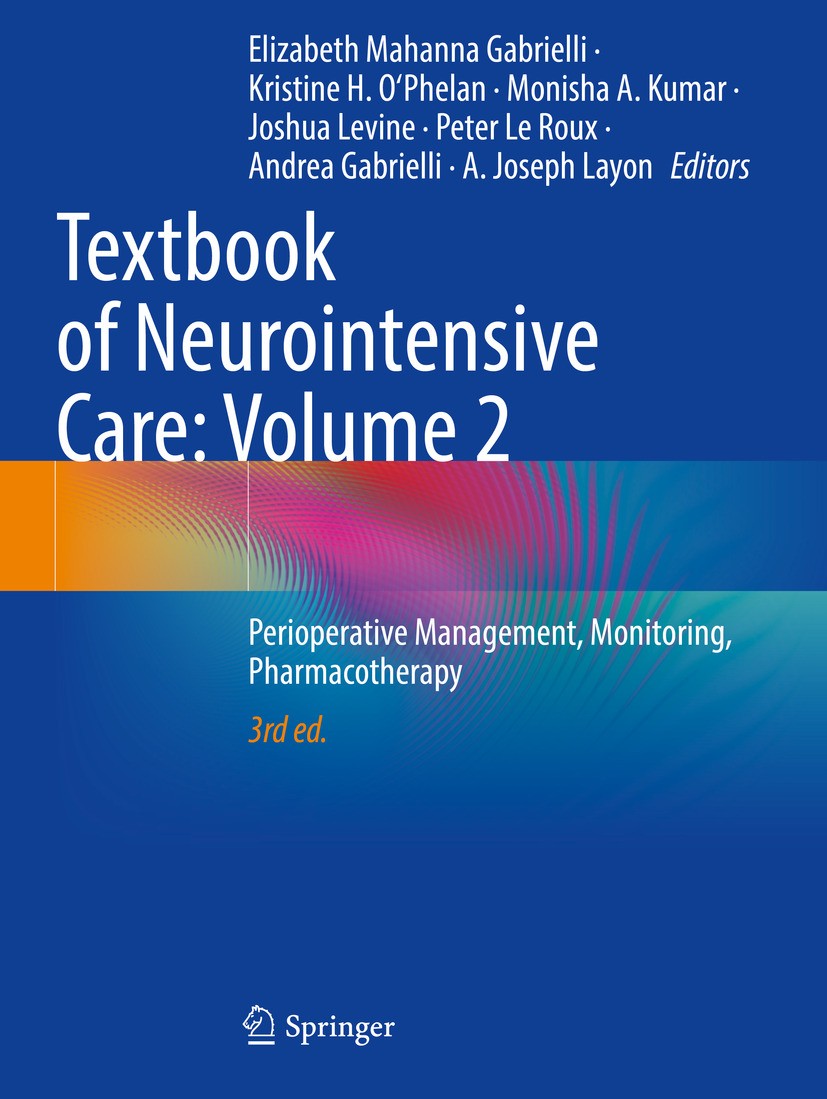| 书目名称 | Textbook of Neurointensive Care: Volume 2 | | 副标题 | Perioperative Manage | | 编辑 | Elizabeth Mahanna Gabrielli,Kristine H. O‘Phelan,A | | 视频video | http://file.papertrans.cn/904/903634/903634.mp4 | | 概述 | Reviews all monitoring, pharmacological and perioperative strategies used in neurointensive care.Provides evidence-based data and includes algorithms to facilitate decision making and key points in ea | | 图书封面 |  | | 描述 | .This extensively updated edition provides a comprehensive review of intensive care for neurologically injured patients from the emergency room and ICU through the operating room and post-surgical period in two comprehensive volumes. The Editors of this second volume present a comprehensive textbook that incorporates best practice/evidence-based medicine and performance improvement, while it champions the three characteristics needed in our neuro–ICUs: patient and family centered high-quality care, education, and discovery. This volume concentrates on perioperative management, monitoring and pharmacotherapy, examining the neurological problems most frequently seen in intensive care, and describes the various types of neurosurgery and critical features of the management of patients. General issues are discussed across the textbook, such as cardiac care, fluids and electrolytes, nutrition, and monitoring as well as more specific conditions and complications including elevated intracranial pressure, seizures, and altered mental states...Listening to an injured brain is not easy. It takes knowledge, dedication, and understanding of the critically ill patient and their family. .Textboo | | 出版日期 | Textbook 2024Latest edition | | 关键词 | Neurointensive; Neuroradiology; Neurosurgery; CNS Trauma; Ventilation; Sepsis; Neuroanesthesia; Monitoring; | | 版次 | 3 | | doi | https://doi.org/10.1007/978-3-031-62224-3 | | isbn_softcover | 978-3-031-62226-7 | | isbn_ebook | 978-3-031-62224-3 | | copyright | The Editor(s) (if applicable) and The Author(s), under exclusive license to Springer Nature Switzerl |
The information of publication is updating

|
|
 |Archiver|手机版|小黑屋|
派博传思国际
( 京公网安备110108008328)
GMT+8, 2025-11-14 11:47
|Archiver|手机版|小黑屋|
派博传思国际
( 京公网安备110108008328)
GMT+8, 2025-11-14 11:47


